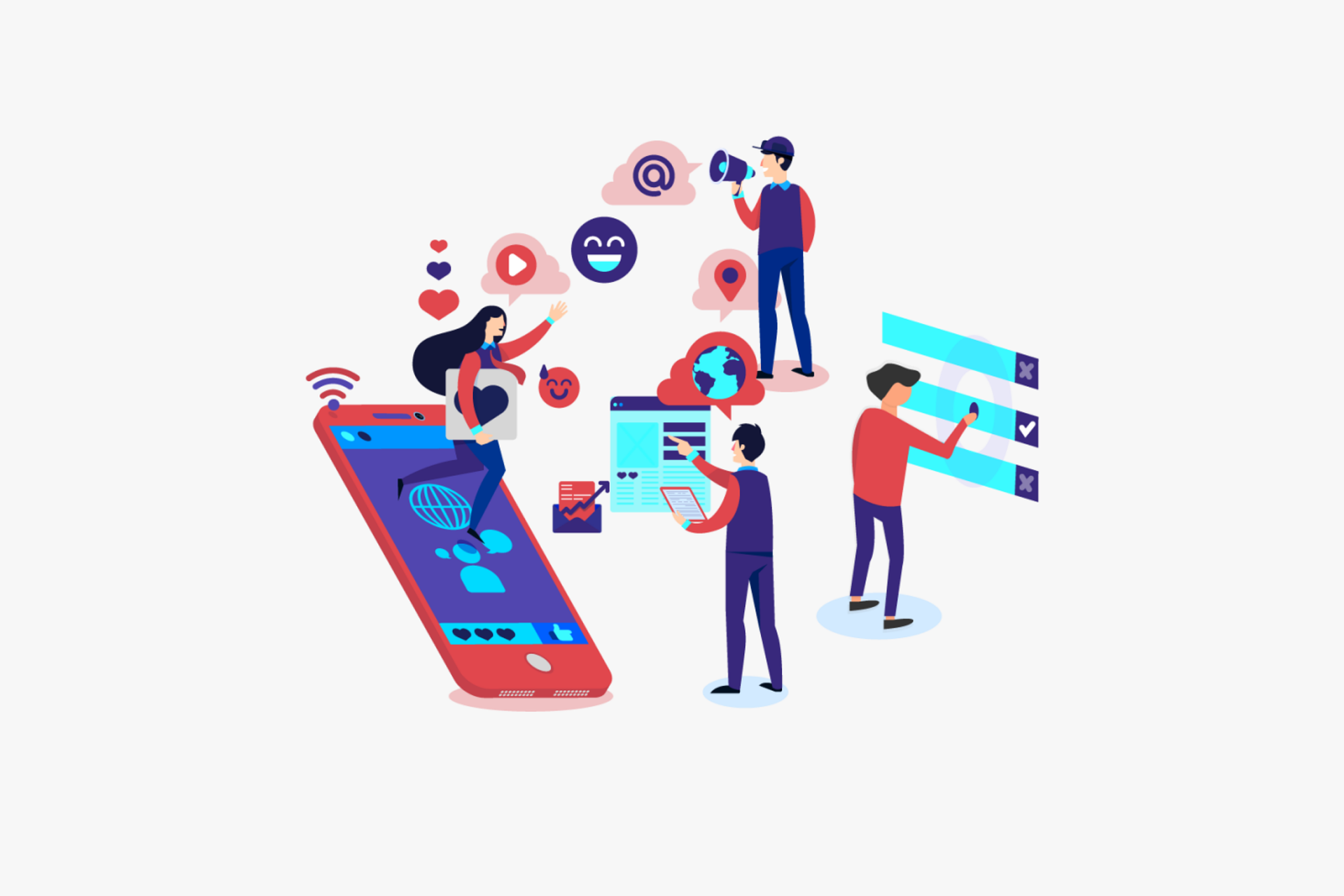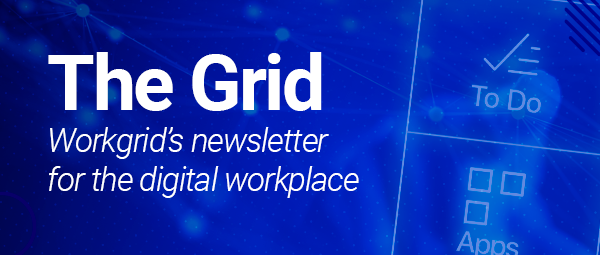At Simpler Media Group’s Digital Workplace Experience 2020 virtual conference, Workgrid moderated the roundtable discussion, The Future of Workplace Communications. Attendees from a range of industries and functional departments discussed the communication challenges they face and shared ways in which the intranet could be used to help overcome those challenges.
As with all the other session at the event, the discussion was rooted in the growing belief that the digital workplace and employee experience are inextricably linked partners in the long-term success of business.
It’s a good foundation to start these discussions because despite the fact that all the organizations represented at the event are at different places in their digital workplace journeys, studies are showing that the digital workplace has grown as a priority for all businesses over the past year.
Additionally, as Dion Hincliffe pointed out in his keynote, Measuring Your Way to Digital Workplace ROI and Success, employees must be the focus of any digital workplace discussion, because the only experience they have right now is a digital one, so it’s got to be right.
We want to keep this conversation going even if the event is over, so we’re diving a little deeper into the questions asked at the roundtable…
How have your enterprise communication needs changed since the pandemic? What are your emerging challenges? Where do your employees go for internal communications and resources?
The feedback attendees provided to these questions was pretty much what you’d expect given we’re living through a global pandemic that forced entire workforces to transition to remote work virtually overnight:
Employees are struggling with too much communication in too many channels
The challenge to find information is more acute than ever before
It’s hard to deliver a standard experience for all employees that’s also personalized to each individual
Some people are missing communications because they aren't in an office where a variety of communication channels are typically used
Keeping up with all the changes taking place is getting to be a challenge – employees need support
It’s reasonable that people, and therefore organizations, are struggling with these kinds of issues. The pandemic has trained an intense spotlight on the digital workplace. Gaps that existed before are still present, they’re just bigger, which is forcing businesses to realize that just because technology has enabled widespread remote work doesn’t mean that it will be easy. It can’t be, for a number of reasons.
For one thing, the natural flow of information has been disrupted. Without the proverbial watercooler to chat around or the ability to turn to the coworker at the next desk to ask a question, the peer-to-peer flow of information has been disrupted.
Finding information has also become a challenge. As businesses have rolled out a variety of solutions to make remote work “easier” for employees, workers now have more distractions than ever. From March – February 2020 alone, there’s been an 11-point increase in the challenges associated with siloed systems and data.
![[asset] top-digital-workplace-challenges-dwx20](https://images.ctfassets.net/z7p73u8c0thn/14mQNWDYRM7y0uekh9aUKu/92eb1fb8efec2f1bfde6542b6a0f9c0a/Challenges.jfif?w=1200&h=674&fl=progressive&q=60&fm=jpg&bg=transparent)
It’s no wonder. Employees interact with an average of 40 different applications in the course of their daily work, resulting in significant fragmentation and frustration. They’re distracted, they can’t find the information they need and under those conditions, it can be impossible for internal communications teams to reach workers with important information.
It’s become clear that information is key to the success of a distributed workforce – both receiving it and finding it. To arm employees with the resources they need, organizations are going to have to rethink their strategies behind everything – and communications is just the beginning.
How do you see the corporate intranet playing a role in answering these challenges? What are its current strengths? What are the gaps? What are the alternative channels for communication and information sharing?
Attendee feedback regarding intranets was very much aligned with what we’ve heard from the organizations we work with.
While it was recognized by the group that intranets are an inherently ideal asset for creating a centralized communications hub, most cited weak search functionality as their prime shortcoming. And because employees are unable to find what they need on a corporate intranet (and without the ability to simply ask a nearby coworker), they often rely on links in emails to direct them where they needed to go, along with other unnecessarily time-consuming workarounds that hurt productivity and increase frustration.
It’s unfortunate that intranets have historically failed to get the attention and resect that they deserve. When designed and maintained properly, an intranet can be a powerful tool in the digital workplace arsenal and an easy way to improve the employee experience, serving as the personalized, contextual, and timely resource workers need to be effective. But intranet managers and corporate communication professionals need to set aside the age-old belief that the intranet is nothing more than a static, stale archive of hard-to-find information.
Instead, they should focus on giving it the power it needs to facilitate effective communication across the entire enterprise. With the right technology to modernize its capabilities, an intranet is ideally positioned to serve as a flexible and agile platform that delivers the experiences, content, applications, and services of today, as well as the innovations of tomorrow. It can be the ideal front door to your digital workplace – and it can do so without replacing any of your existing technology.
How does the intranet integrate with other enterprise tools? What's working and not working in that area?
The response to this was simple – and unfortunate. For the most part, intranets are only being used as repositories for corporate information. There are no integrations, which means far too many intranets deliver the same diminishing value as a weeks old newspaper left behind in a waiting room.
"Adoption is not automatic. You must provide value." -Dion Hinchcliffe, DWX 2020
This is a HUGE missed opportunity, because integrating with core enterprise applications on the intranet not only makes it possible to deliver the modern experiences employees need to be effective, it supports many of the long-standing goals of the digital workplace:
Improved productivity – making it easier to interact with complex enterprise systems by abstracting only the information and functionality each employee needs
Streamlined communication – elevating important information out of email and into a central location
Increased engagement - simplifying the high volume, low-value tasks that stand in the way of meaningful work
![[asset] IDC-2024-Prediction](https://images.ctfassets.net/z7p73u8c0thn/3fUCZCHDmXGhnUNwID3Dg0/e85a261d34b7601988eac2e8d4319020/IDC.jfif?w=452&h=89&fl=progressive&q=60&fm=jpg&bg=transparent)
If organizations take the time to build value and create an intranet experience that offers the features and functionality employees need on a regular basis, then they will come. Adoption will not be an issue.
If you had a blank check to build the intranet of your dreams what would it look like? How would it operate? Where do you see future evolution happening?
The intranet wish list voiced by attendees was very much in line with the functionality that’s needed for an employee-focused digital experience:
Dynamic content, such company announcements, articles, engagement opportunities, etc.
Targeted communications by site or function
Mobile accessibility
Better search functionality
Unfortunately, most organizations don’t have a blank check to make these changes a reality. In fact, budget constraints are cited as a major roadblock for many organizations.
![[asset] biggest-digital-workplace-challenges](https://images.ctfassets.net/z7p73u8c0thn/78mbQKHHpsVhT6gg3GCoqD/69df75b6fd17b2fa2749ae96787d58f7/budgetconstraints.jfif?w=780&h=530&fl=progressive&q=60&fm=jpg&bg=transparent)
Budgets being tight doesn’t negate the need for a better digital experience, however. Employees still need digital tools that enable them to perform their jobs effectively and give them more time to focus on the meaningful work that drives value for the business.
So how can it be done without an expensive, time-consuming tech overhaul?
It can be done with a digital experience layer. Experience layer technology is designed to separate the user experience from underlying source systems. These layers give organizations the flexibility to control and design modern, streamlined experiences that meet employees’ needs. They help them fulfill their intent (i.e. accomplishing routine tasks with fewer clicks) while maintain investments in the best-of-breed business applications that keep the business running.
![[asset] experience layers manage complexity](https://images.ctfassets.net/z7p73u8c0thn/7oNHCYYYvB44Le9opbhlqr/5b767c8154b0c3d00517d01e11dd9879/Experience_Layers.jfif?w=1200&h=677&fl=progressive&q=60&fm=jpg&bg=transparent)
And where does the intranet come in? It’s the perfect location for anchoring an experience layer, serving as the ideal front door to your digital workplace, and it’s achievable without replacing any of your existing technology.
Companies like Liberty Mutual Insurance and other Fortune 500 financial service institutions have used this approach successfully to improve the employee experience. By simply providing a modern intranet that aggregates tasks and information into a central location, they were able to give employees a command center for everything they need to know and do. Their intranets were transformed into flexible and agile platforms that deliver the experiences, content, applications, and services employees need today - as well as the innovations of tomorrow.
Conclusions
Any discussion about specific aspects of the digital workplace, such as the intranet or internal comms, always ties back to the employee experience, and for good reason. Fixing the experience naturally solves lots of other problems along the way. Accenture, for example, concentrated on improving the top 100 experiences across their organization and saw an increase in NPS as well as significant reductions in administrative burdens, cycle times, and total cost to serve across the organization.
![[asset] Dion-Hinchcliffe-Moments-That-Matter](https://images.ctfassets.net/z7p73u8c0thn/1O5MYNtFpy3Sp0HV5DBeeE/5e814bb7aad8f14abf577ea0b1c74dc8/Dion.jfif?w=579&h=243&fl=progressive&q=60&fm=jpg&bg=transparent)
(Source: Dion Hinchcliffe, Measuring Your Way to Digital Workplace ROI and Success)
The lesson that can be learned from all of this is simple: creating an effective digital workplace starts with delivering the right experiences.
The intranet is an effective, fast, and easy way to do just that, anchoring the experience layer and acting as the fabric that sits across all the different tools and technologies employees use to create the cohesive experience employees want and need.
To learn more about how an intranet can yield quick returns on many of the high-value experiences that will help gain buy in and set up the ideal foundation for long-term growth, flexibility, and innovation, check out Troy Campano’s DWX mainstage presentation, “Employee Experience Needs a New Approach.”

![[asset] State-of-digital-workplace-priorities](https://images.ctfassets.net/z7p73u8c0thn/1mc2uY9WQAQQ7Q32l1HoWZ/4866f1d6b486151a0354deb11f8df772/Priorities.jfif?w=742&h=389&fl=progressive&q=60&fm=jpg&bg=transparent)



